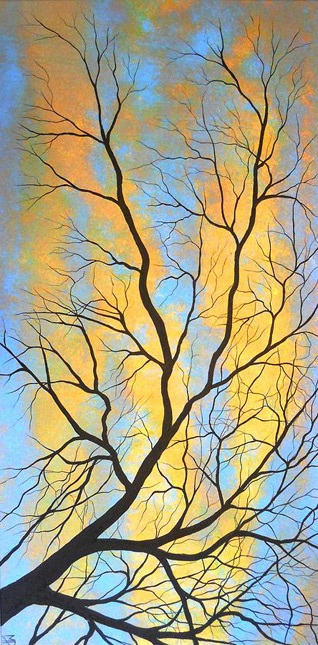Columnists
Tree Dreams:
Letters from Espanola
EK ONG KAAR KAUR
We human beings chart reality according to our own ability to perceive. Even though nature has shown us so many times that we do not see it all, or know it all, still we can become very fixed about the way we think our world works.
Recently, I have been reading Bill Mollison's original pamphlets on permaculture.
Permaculture is, by definition, the “development of agricultural ecosystems intended to be sustainable and self-sufficient."
Permaculture fascinates me because it starts with people observing and understanding the land as it is, on its own terms. And then creating garden designs from that basis: gardens which integrate into the climate, and, in time, can become self-sustaining.
Bill Mollison is considered the father of permaculture. There is one point he made in these pamphlets that really opened my eyes as to how little we actually see when it comes to the natural world. He writes:
"The forests provide a very large amount of our precipitation. When you cut the forests from ridges, you can observe the rainfall itself fall between 10% and 30% which you could probably tolerate. What you don't see happen is that precipitation may fall over 86%, the rainfall being only a small fraction of the total precipitation. It is quite possible on quiet, clear nights with no clouds, no rainfall recorded anywhere on any gauges, to have a major precipitation in forests systems. This is particularly true of maritime climates. But it is also true of all climates."
These few sentences really rocked my world. On the one hand, the statement implies that trees somehow manage to attract rain. Common sense, whatever that means, would posit rain and trees as having the reverse relationship. The more rain there is, the more trees grow.
But the opposite is actually true. The fewer trees there are, the less rain comes. How is that possible?
Even more powerful is Bill Mollison's observation that forests can create major precipitation for the land and their surroundings without a cloud in the sky.
Something in these statements completely captured my imagination. For many days after reading this, I started to look at trees with different eyes. Seeing, on the one hand, how few trees there actually are. Realizing that we have formed a human-made landscape that relegates trees to the position of being interesting ornamental accents, rather than powerful channels of life.
And I suppose my subconscious got caught up with the puzzle, "How is it possible?"
Because one night a couple weeks ago, I had the most fascinating dream. In the dream, I was standing below a massive tree, with a huge trunk, and an awesome sweeping canopy. The tree had its own, wordless awareness - like a kind and protective grandfather. Without speaking, it reached out to show me something.
There, on the ground, at the base of the tree where the roots were, everything felt moist. Damp. And from that dampness, the smallest parts of life got nourished. Grasses and insects were living off that moisture, creating a web of life.
The tree showed me how it could reach into the sky and pull the moisture down into itself, into its roots. In this way, it could create a protected space for water and the life that water gives.
Then, in the dream, I was sent to another part of the land where there were no trees at all. The soil was totally dry, no moisture within it. The grasses were dried up, instead of green and living. No trees. No moisture in the soil. No grasses. No life.
Now, whether or not the spirit of the trees came to me in my dreams; or whether my subconscious mind got creative while pondering over Bill Mollison's words, I woke up with an insight I did not have before.
And I realized that we do not really understand how this totally complex biosphere called Planet Earth actually functions. There are so many mysteries hidden from us. We are filled with our own ideas of "how things work." It takes a willingness to see things in a new light, to empty oneself of one's previous notions, in order for life to show you its little secrets.
Since the dream, I have decided that planting trees where I live needs to become an annual event. Not just one or two trees here and there. But five or six trees every year.
Permaculture. Self-sustaining agricultural ecosystems. In the semi-arid desert of New Mexico, adding some trees to the landscape seems like a very good first step.
May 9, 2013
Conversation about this article
1: Baldev Singh (Bradford, United Kingdom), May 09, 2013, 7:36 PM.
Right on cue! On Monday, the 6th of May, summer started in the UK and I had just read a report that 'a walk in a forest' is great for the mind. So I took Monday off to explore the village of Linton near Wetherby in Yorkshire and found meadows, orchards and woods and felt a fantastic sense of freedom and belonging here that it questioned my 'other' existence and if it was 'necessary'! Exactly as when I recite Japji Sahib and want to repeat it instead of getting up after one recitation and end up doing two or even five recitations rather than joining the usual routine of life which becomes secondary in such serene circumstances!



